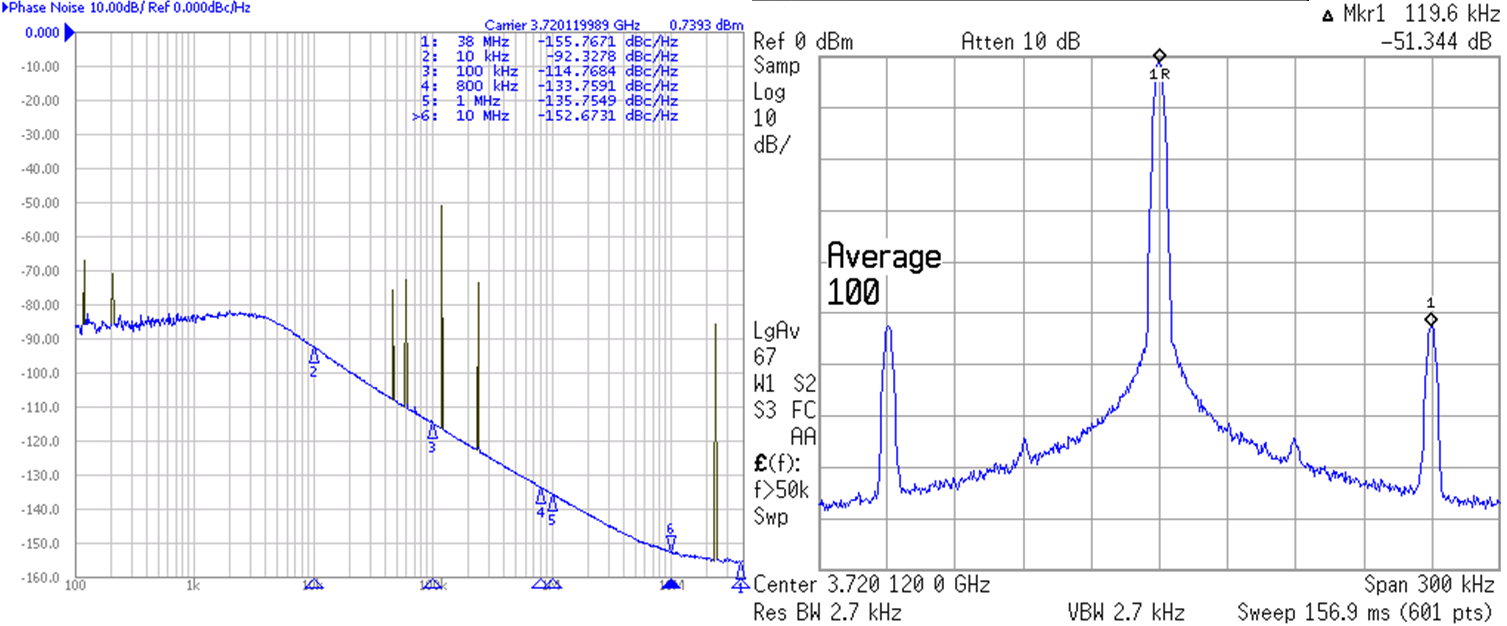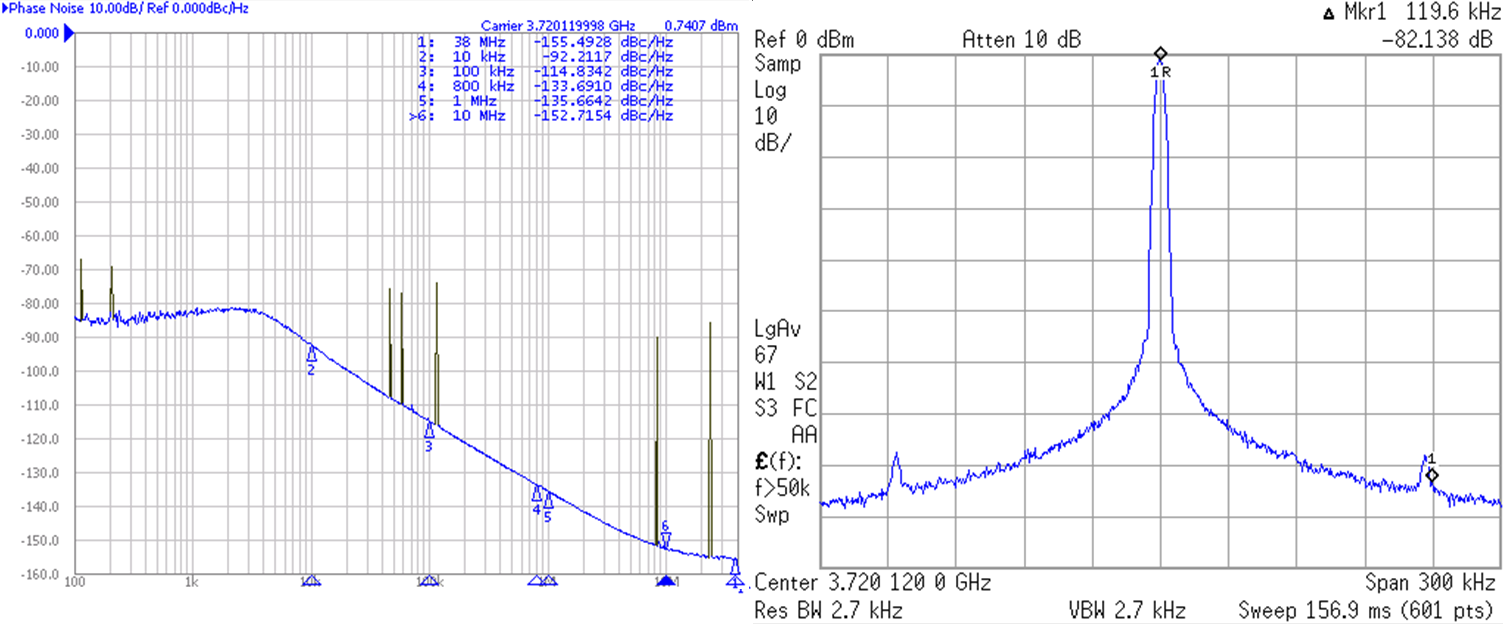SNAS680E December 2015 – August 2022 LMX2582
PRODUCTION DATA
- 1 Features
- 2 Applications
- 3 Description
- 4 Revision History
- 5 Pin Configuration and Functions
- 6 Specifications
- 7 Detailed Description
-
8 Application and Implementation
- 8.1
Application Information
- 8.1.1 Optimization of Spurs
- 8.1.2 Configuring the Input Signal Path
- 8.1.3 Input Pin Configuration
- 8.1.4 Using the OSCin Doubler
- 8.1.5 Using the Input Signal Path Components
- 8.1.6 Designing for Output Power
- 8.1.7 Current Consumption Management
- 8.1.8 Decreasing Lock Time
- 8.1.9 Modeling and Understanding PLL FOM and Flicker Noise
- 8.1.10 External Loop Filter
- 8.2 Typical Application
- 8.3 Power Supply Recommendations
- 8.4 Layout
- 8.1
Application Information
- 9 Device and Documentation Support
- 10Mechanical, Packaging, and Orderable Information
8.1.5.1 Moving Phase Detector Frequency
Engaging the multiplier in the reference path allows more flexibility in setting the PFD frequency. One example use case of this is if Fvco % Fpd is the dominant spur. This method can move the PFD frequency and thus the Fvco % Fpd.
Example: Fvco = 3720.12 MHz, Fosc = 300 MHz, Pre-R divider = 5, Fpd = 60 MHz, Fvco%Fosc = 120.12 MHz (Far out), Fvco%Fpd = 120 kHz (dominant). There is a Fvco%Fpd spur at 120 kHz (refer to Figure 8-5).
 Figure 8-5 Fvco % Fpd Spur
Figure 8-5 Fvco % Fpd SpurThen second case, using divider and multiplier, is Fpd = 53.57 MHz away from 120-kHz spur. Fvco = 3720.12MHz, Fosc = 300MHz, Pre-R divider = 7, Multiplier = 5, Post-R divider = 4, Fpd = 53.57 MHz, Fvco%Fosc = 120.12 MHz (Far out). Fvco % Fpd = 23.79 MHz (far out). There is a 20–dB reduction for the Fvco % Fpd spur at 120 kHz (refer to Figure 8-6).
 Figure 8-6 Moving Away From Fvco % Fpd
Spur
Figure 8-6 Moving Away From Fvco % Fpd
Spur